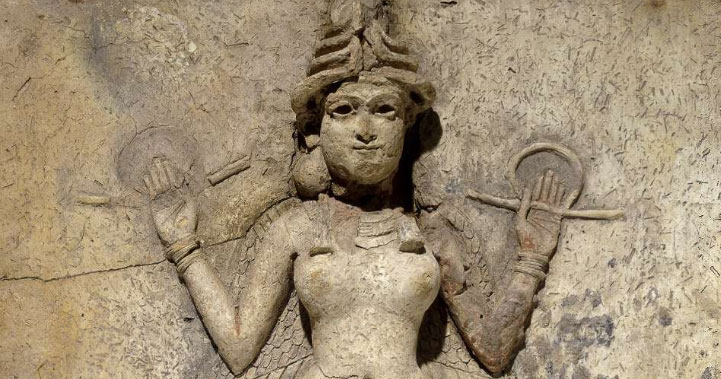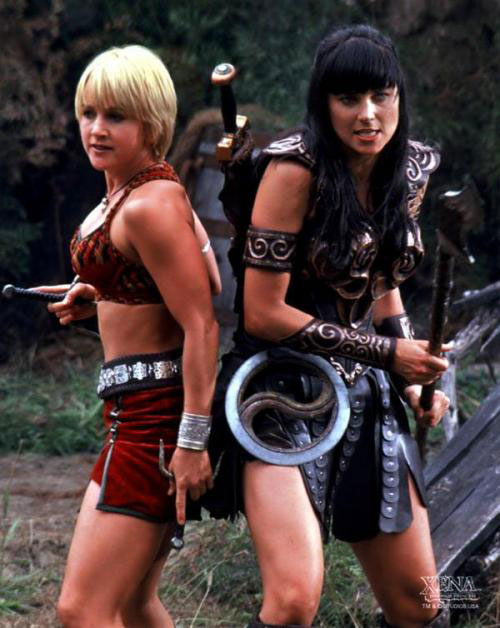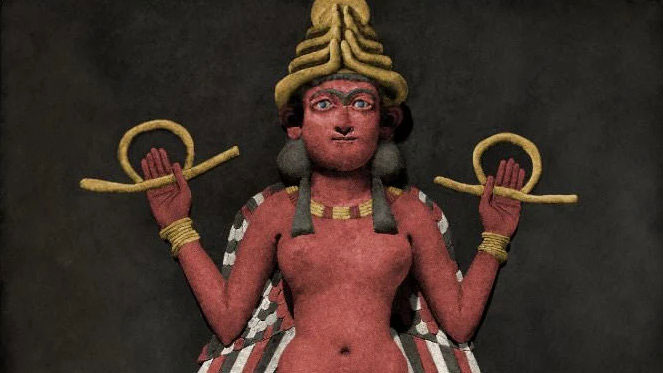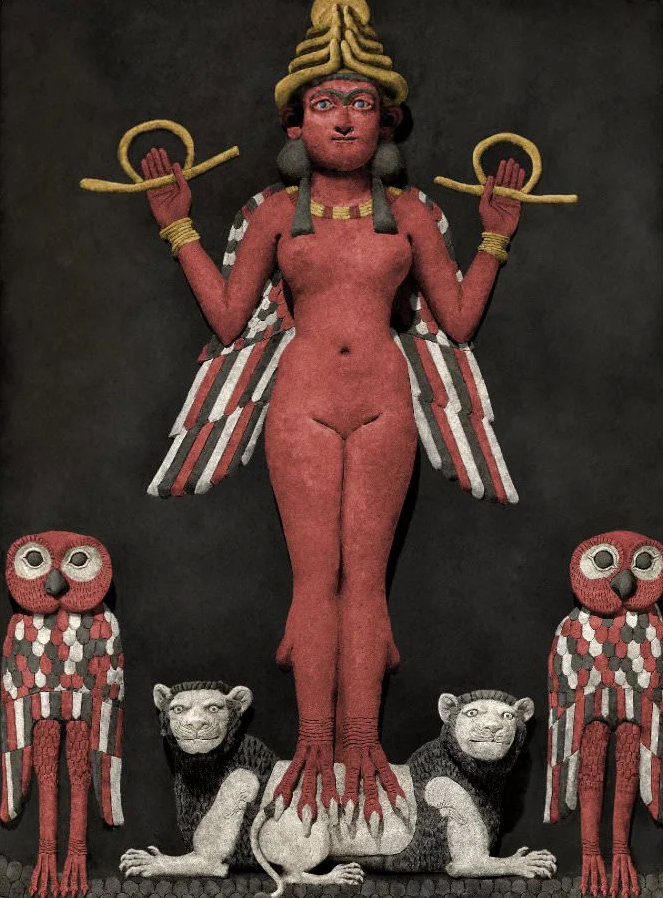The Ur-Text: The Descent of Inanna
This Sumerian tale is the earliest model of the Heroine’s Journey

Editor’s Note: In “45 Master Characters,” Victoria Lynn Schmidt outlines a version of the Heroine’s Journey modeled after the Descent of Inanna. What follows is my quick summary of that translation to aid your understanding.
Who is Inanna?
Inanna is a Sumerian goddess, and in the language of the Sumerians, her name literally means “Queen of Heaven.” The Sumerians designated her the Queen of Heaven and Earth. As well, she is the First Daughter of the Moon, and the Morning and Evening Star (the planet Venus). If in ancient times you were speaking to an Akkadian, a Babylonian, or an Assyrian, they would have called her Ishtar. Astarte of the Canaanites, Isis of Egypt, and Aphrodite in Greece are also associated with her.
Her “portfolio” included love, war, fertility, rain, and prostitutes. People made offerings of emmer beer and cake to Inanna. The cake is one reason why many believe she is the “queen of heaven” the Israelites were accused of making offerings to in the Book of Jeremiah, because they were offering cakes to just such an entity.
Aside from her own story, the goddess also appears in the Epic of Gilgamesh.
Her Descent
The Descent of Inanna describes Inanna’s journey into the Underworld, where her elder sister, the goddess Ereshkigal, reigned. In a previous story, Inanna got her grandfather Enki drunk. In his drunken state he gave her the me, the holy laws of heaven and earth which even the gods had to obey. The me encompassed aspects of civilization including the arts, politics, crafts, and so forth.
While dwelling in the Great Above, Inanna hears the call of the Great Below: her brother-in-law Gulgalanna, the Bull of Heaven, has died. Thus she decided to go to the Great Below herself. In seven cities from Uruk to Akkad she abandoned her temples to go to the Underworld. To prepare for this journey Inanna took seven me:
She placed the shugurra, the crown of the steppe on her head.
She arranged dark locks of her hair across her forehead.
She tied the small lapis beads around her neck,
Let the double strand of beads fall to her breast,
And wrapped the royal robe around her body.
She daubed her eyes with the ointment called, ‘Let him come, let him come,’
Bound the breastplate called ‘Come man, come!’ around her chest,
Slipped the gold ring over her wrist,
And took the lapis measuring rod and line in her hand.
Inanna is accompanied by her friend, Ninshubur, whose name means “Queen of the East.” From what Inanna says, Ninshubur is her wise adviser and a faithful warrior who fights by her side — very Xena and Gabrielle, no? To Ninshubur, Inanna gives instruction on what to do if she fails to return after three days.

Though Inanna is warned that there is no return from the Dark City (land of the dead), she enters anyway.
In the Great Below, Inanna comes to the Seven Gates of Judgment. At the first gate she is stripped of her crown. At each successive gate she loses another me: her lapis beads, her double stranded beads, her breastplate, her bracelet, her lapis rod and measuring line, and finally her royal robe. Apparently she was allowed to keep her eyeshadow! Of course, cosmetics avail you not in the underworld; the other items (the mes) represented aspects of Inanna, including her power.


The Queen of Night
© The Trustees of the British Museum / This plaque was dubbed the “Queen of Night”. Here the plaque’s original colors have been reconstructed. The plaque itself dates to the 19th or 18th century BC, during the Old Babylon period in southern Iraq. No one knows if the figure represents Inanna or Ereshkigal, or possibly Lilith. As I understand, in the Ancient Near East (and ancient Greece), wings on a humanoid or non-avian figure signaled the bearer was divine.
The bottom line: Inanna is naked when she appears before Ereshkigal, “Queen of the Great Earth.” The underworld goddess passes judgment on her little sister, and fixes the eye of death upon her. For added measure, Ereshkigal hangs her up on a hook like a piece of meat. There Inanna is expected to rot away. And she would have, had not Ninshubur heeded her instructions.
When Inanna’s father hears of her plight he says, “She who receives the me of the underworld does not return. She who goes to the Dark City stays there.” His own father concurrs with him. Only Inanna’s maternal grandfather, Enki, agrees to rescue her.
Enki fashions from dirt two sexless beings: the kugarra, bearing the food of life, and the galatur, bearing the water of life. Through their mystical shenanigans Inanna is freed — on one condition: someone must take her place in the underworld.
The kugarra and galatur escort her out of the underworld, and once above ground they start helping Inanna find a replacement for them to drag into the underworld. They suggest she give them her children, or her loyal Ninshubur, all of whom mourned for her.
But Inanna will not betray them.
Instead she offers up her husband, who is sitting unmoved on his throne when she finds him. I assume she was angry that he did jack all to help get her out of the land of the dead, but that would be my motive in her place. The story leaves her motive to our imaginations, and some readers attribute more mystical intentions than my base one. At any rate, her mate flees and attempts to evade this burden by turning into a snake. What happens next is told of in the translation by Wolkstein and Kramer.
I hope this helps!